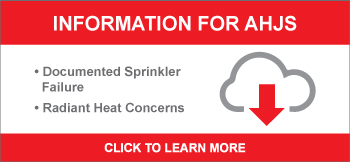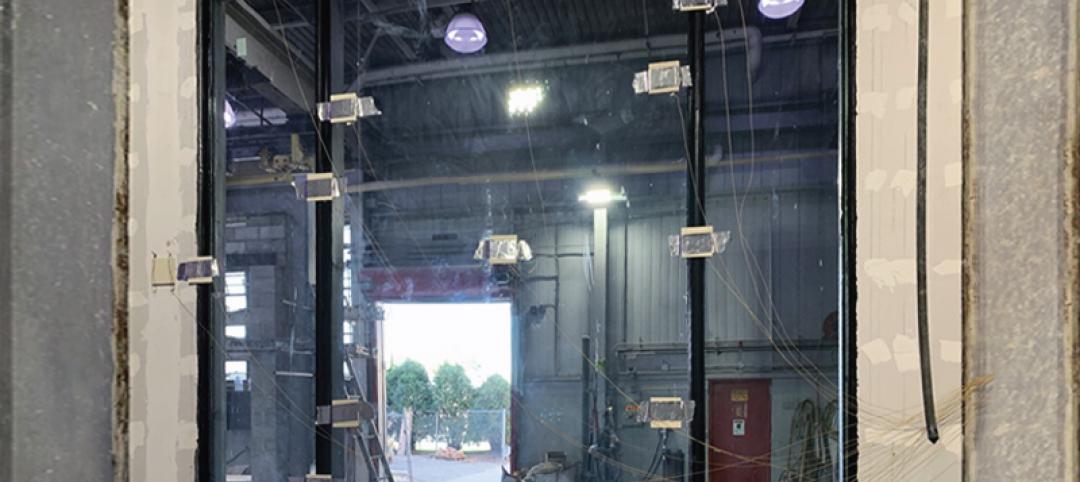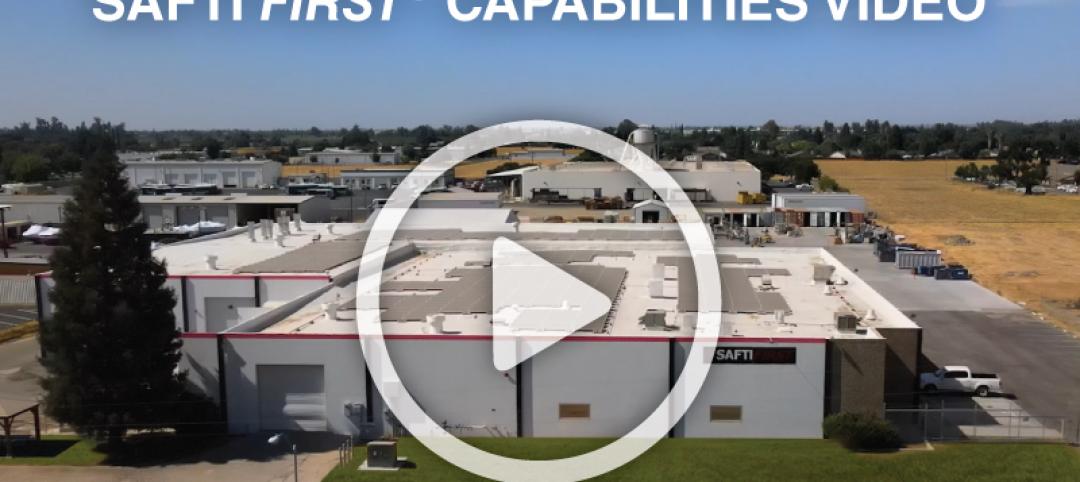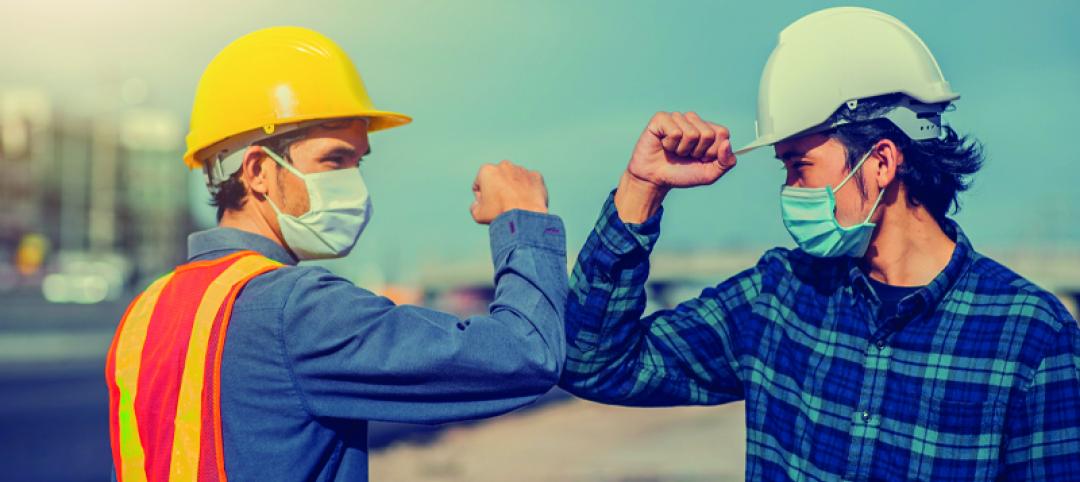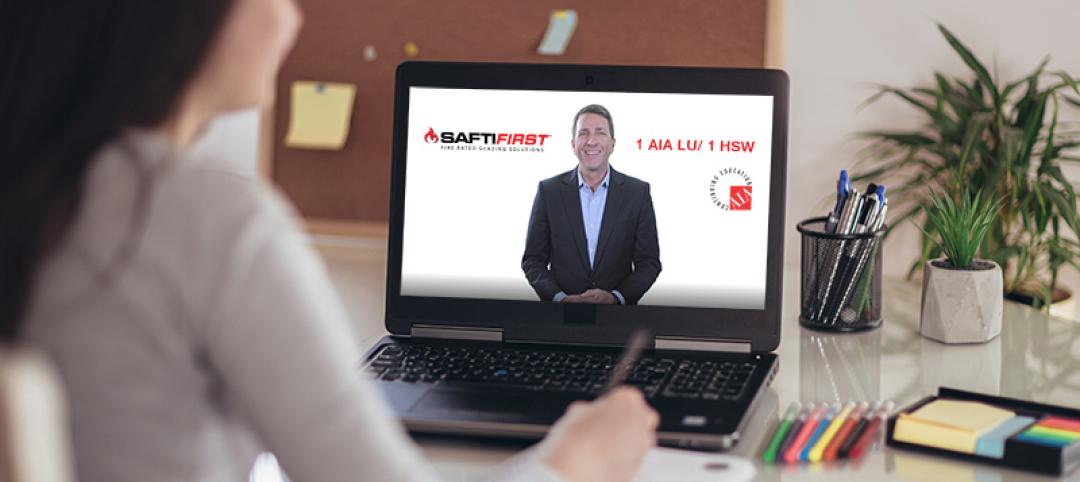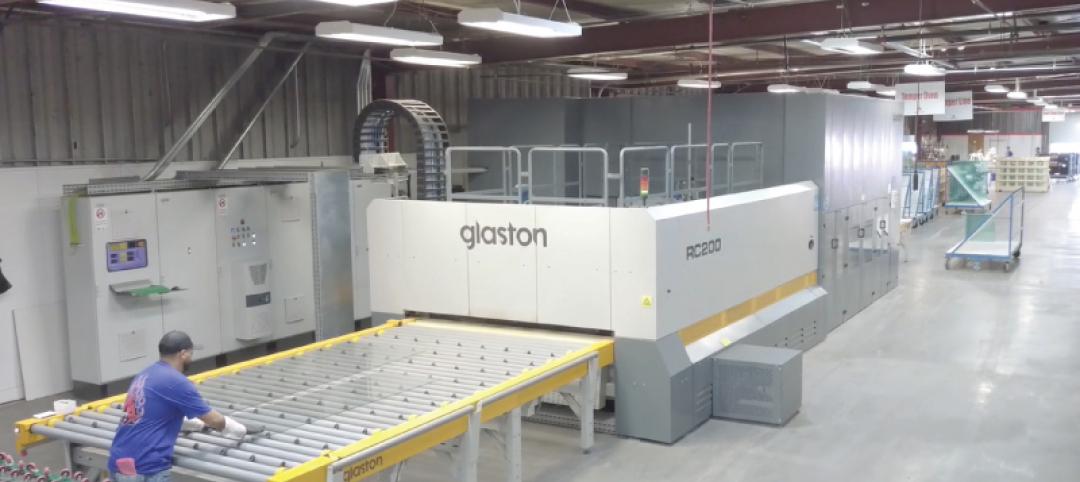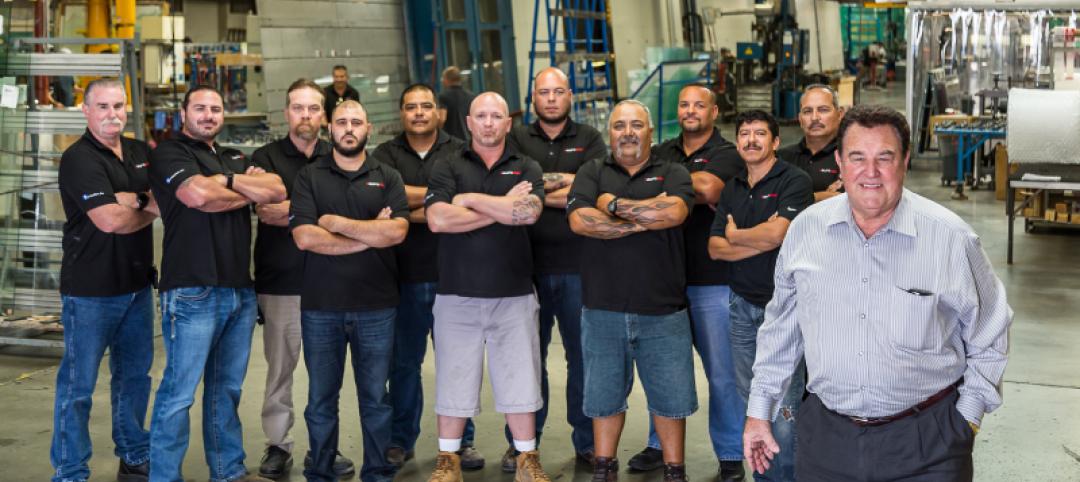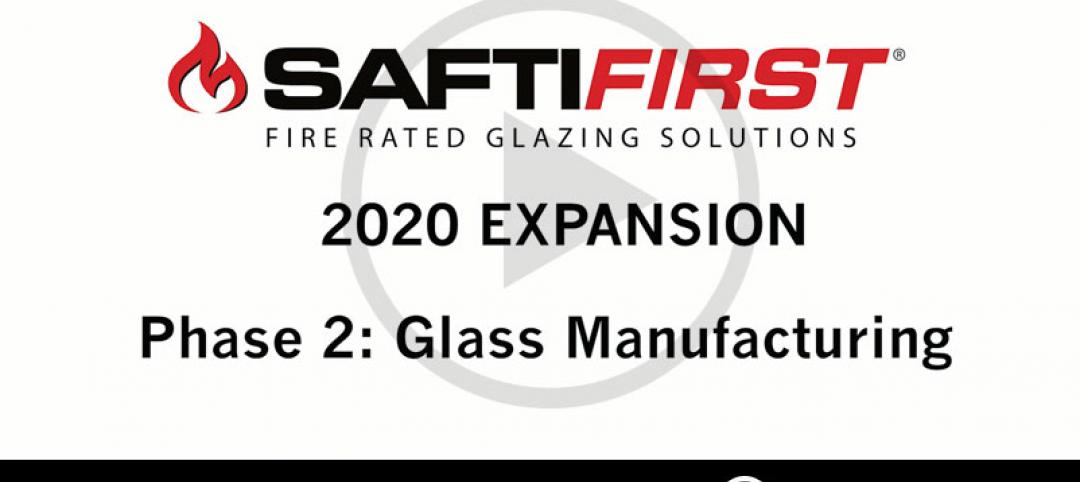Glazing that meets the ASTM E-119 standard are classified as “fire resistive” or “fire-resistance-rated” in Chapter 7 of the IBC. Marked with a “W”, it can be used as fire barriers in exit enclosures, exit passageways or horizontal exits to ensure that building occupants are protected from smoke, flames and dangerous radiant heat as they exit a burning building. In cases where evacuation is difficult or impossible (ex. immobile patients in hospitals or long-term care facilities), the fire barriers in exit enclosures, exit passageways or horizontal exits serve as areas of safe haven where building occupants can await rescue.
Given this important life safety function, the ASTM E-119 test is the most stringent and most difficult test to pass for all fire rated glazing assemblies – and rightfully so. The test specimen has to withstand temperatures of over 1800 degrees F without the passage of flame or gases hot enough to ignite cotton waste for the entire duration of the test; has to pass prescribed hose stream test; and has to limit the temperature rise on the non-fire side to less than 250 degrees F over ambient.
So it still comes as a surprise to me and others in the life safety community that a modified, less stringent version of the ASTM E-119 test (if you can still call it that) now applies to special-purpose sprinklers used with fixed glazed assemblies as an alternative product for 1-2 hour fire resistive wall assemblies. Other than following the time and temperature curve, there is nothing that resembles the original ASTM E-119 test. There is no cotton waste test, there is no hose stream test, and there is no documented report showing how it limits the temperature rise on the non-fire side to less than 250 degrees F over ambient.
TYCO, a sprinkler manufacturer and proponent of the modified criteria, has capitalized on this sell its TYCO Model WS sprinkler system with heat strengthened or tempered glass as an alternative product in 1-2 hour fire resistive walls through ESR-2397. TGP, a distributor of fire protective ceramics, has jumped in with TYCO to sell laminated ceramic with TYCO Model WS sprinklers as an alternative to 1-2 hour fire resistive walls.
In order to use the wetted-glass approach that TYCO and TGP are pushing, the architect must assume all the work and related costs for submitting the required documentation necessary for the AHJ to evaluate the TYCO Model WS and FireLite Plus WS as alternative products to ASTM E-119 rated fire resistive glazing.
But before the architect or AHJ considers this alternative system, there are some important concerns that must be raised:
Documented Sprinkler Failure
The potential effectiveness of the TYCO Model WS and FireLite Plus WS systems is entirely dependent on 100% sprinkler reliability and effectiveness, which doesn’t exist. As the National Fire Protection Association (NFPA) has reported, sprinklers operated effectively only 87% of the time.
Read more on “Documented Sprinkler Failure” here.
Questionable Radiant Heat Protection
In addition to sprinkler failure, another concern that should be raised is how the TYCO Model WS or FireLite Plus WS system limits radiant heat. Wetting the surface of heat-strengthened or tempered glass may prevent thermal shock and compartmentalize smoke and flames, but there is no documented evidence of limiting the passage of radiant heat to less than 250 degrees F over ambient. Ceramics may be able to resist cracking or shattering at high temperatures, but the IBC limits its use to fire protective applications only because it does not limit radiant heat whatsoever.
Read more on “Questionable Radiant Heat Protection” here.
Cost Concerns
Somehow, there is a perception that the higher prices of fire resistive glazing compared to non-rated glazing is enough to consider TYCO Model WS and FireLite Plus WS as cost-effective alternatives. However, these alternative assemblies use a special wet-pipe sprinkler system that is different from the sprinklers used throughout the building. Per ESR-2397, the automatic water supply must have the capability of supplying 1 or 2 hours of water, depending on the rating of the wall. Depending on the circumstances, this can require larger pumps, increased water pressure and additional water that dramatically increases the initial cost of installing the system (more so if FireLite Plus is used, which is already expensive) and the perpetual maintenance costs required to make sure that the sprinkler system works.
Read more on Cost “Concerns” here.
Design Restrictions
Looking at ESR-2397 more closely shows several restrictions on the TYCO Model WS and FirePlus WS systems, including:
- Maximum exposed glazing height of 13 feet. No horizontal mullions allowed.
- 36” minimum pony wall required with heat-strengthened or tempered glazing.
- 36” pony wall requirement waived when using FireLite Plus, its sheet size is restricted to 96”. With most floors having a typical height of 10 feet (120”), floor-to-ceiling glazing cannot be achieved without at least 2 feet (24”) of opaque wall.
- Visible amber tint typical of all ceramics when using FireLite Plus WS.
- Cannot be used in exterior wall applications where the fire separation distance is less than 10 feet for states following the 2009, 2012 and 2015 IBC (5 feet for states following the 2006 IBC).
Read more on “Design Restrictions” here.
Of course, it is still up to the architect to decide if it is worth going through the alternative approval process for the TYCO Model WS or FireLite Plus WS products. At the same time, the AHJ still has the authority to either approve or reject these products based on IBC sections 104.10 and 104.11. What I hope to have accomplished through this blog is provide architects and AHJs with thoughtful pause on what fire resistive assemblies tested to ASTM E119 (without modifications to the test method or assembly) are supposed to do – 100% of the time, without failure. It’s a matter of life safety and occupant protection, after all.
Click on the links below to download the TYCO Model WS and FireLite Plus WS Product Alert for Architects and Authorities Having Jurisdiction (AHJs):
More from Author
Bill O'Keeffe | Oct 19, 2020
Going virtual
Manufacturers use virtual platforms to help architects meet CEU requirements.
Bill O'Keeffe | Jul 16, 2020
Obsolete?
"Revolutional, affordable, USA made Fire Rated Glazing for all fire protective areas makes ceramic glazing obsolete". Check out SuperClear 45-HS and SuperClear 45-HS-LI to understand why!
Bill O'Keeffe | Feb 10, 2020
USA-made fire rated glazing goes big in 2020
We are pleased to announce and share that the second phase of this $8 million expansion, upgrading our fire rated glass manufacturing facilities in Merced, California, is underway.
Bill O'Keeffe | Nov 20, 2019
Demand for advanced, USA-made fire rated glazing “RAISES THE ROOF”
With architects specifying full-vision, code-compliant, 60 and 90 minute, temperature rise doors for exit stairwells and other code required applications, we found this as an opportunity to expand our product offerings.



